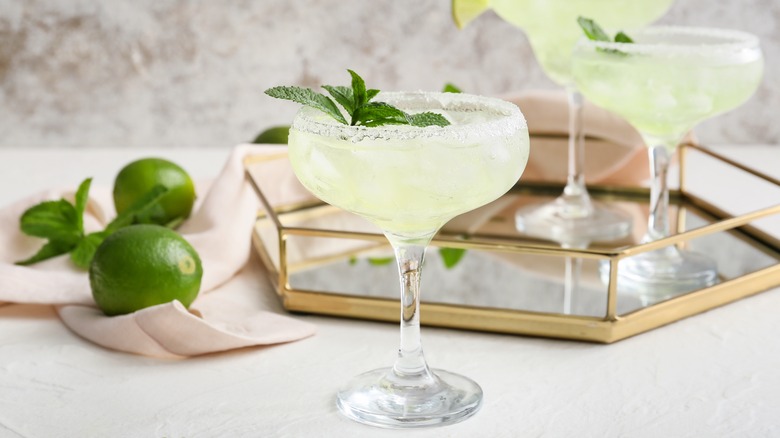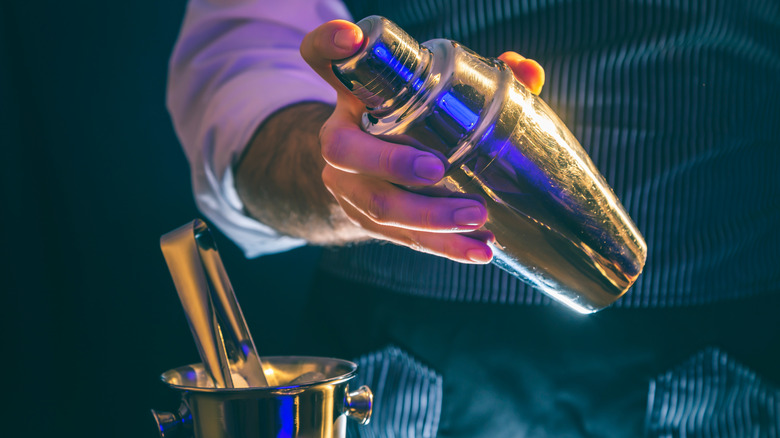The Daiquiri Precursor You've Probably Never Heard Of
Long before sleek cocktail bars and trendy mixology, rum was once consumed en masse as a British naval ration. Cut with water and lime (which unknowingly aided scurvy), this drink known as Grog originated in the 1700s, per Vinepair.
Rarely consumed outside of a ship, this concoction served a strictly utilitarian purpose of maintaining sailors' buzz through extensive voyages. Meanwhile, in 19th century Cuba, locals drank a similar creation called canchánchara. Made with the sugarcane spirit aguardiente, honey, and lime, such a combination of citrus and sweet traces to pre-colonial times, via Liquor.com. Lime and rum — sounds familiar, right? Both canchánchara and grog are proto versions of the daiquiri, a classic rum cocktail.
The perennially popular combination of lime juice, white rum, and sugar is accredited to Jennings Stockton Cox, an American engineer stationed near the remote town of Daiquiri, Cuba. The lore goes that Cox came up with the daiquiri using ingredients on hand, either at a dinner party or for a business meeting, explains Difford's Guide. However, canchánchara's consumption evinces that it's unlikely Cox was the first to create the drink, but rather the first to write it down. And even before he penned the daiquiri, there was another precursor you probably haven't heard of: The gem.
The gem, composed of brandy, rum, and lime, predates the daiquiri by 5 years
The gem originates from William Schmidt's 1892 cocktail anthology "The Flowing Bowl: What and When to Drink." The recipe isn't overcomplicated, yet elegant– equal parts brandy and rum, lime juice, pineapple syrup, and a spoon of sugar. Mixed twice, once with ice, the cocktail is strained into a glass with a cinnamon and lemon slice garnish, via Vintage Cocktail Books.
Published 5 years before the daiquiri recipe, the gem likely existed for up to a decade before its publication. The author, William Schmidt, was an esteemed bartender, collecting hundreds of recipes in his compendium. His assembly of tropically-sourced ingredients like rum, pineapple, and cinnamon, showcases a period soon approaching in American mixology: The Tiki era explains Punch. Although his gem may have faded into obscurity, it laid the groundwork for cocktails like the daiquiri to take off in the U.S. The daiquiri became further refined through the subsequent decades. Sugar substitutions to improve rum flavor, a blended version to make a frozen variety, and boozed-up through the hands of Hemingway, reports Eater. Variations continue, like this pineapple version. But they all nod to 19th century innovations like the gem.

